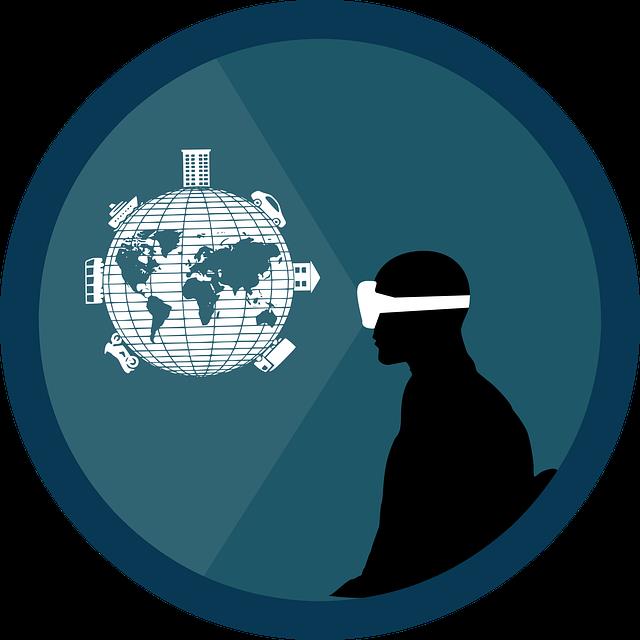
In the ever-evolving field of data science and artificial intelligence (AI), there are numerous avenues for professionals to explore and broaden their horizons.
This article highlights the top 10 areas that are currently shaping the industry, including:
- Big Data
- Data Mining
- Predictive Analytics
- Data Visualization
- Machine Learning
- Data Modeling
- Database Management
- Cloud Computing
- Business Analytics
As the demand for data-driven insights continues to grow, this article provides a glimpse into the exciting and expansive possibilities that lie ahead for those in the field.
Big Data
Big Data is a fundamental aspect of data science and AI, enabling the analysis and extraction of valuable insights from vast and complex datasets. With the exponential growth of data, traditional data processing and storage methods are no longer sufficient to handle the sheer volume, velocity, and variety of data. Big Data technologies have emerged to address these challenges and provide scalable solutions for data processing and storage.
Data processing in Big Data involves the use of distributed computing frameworks like Hadoop and Spark, which allow for parallel processing of data across multiple nodes in a cluster. These frameworks enable the efficient processing of massive datasets by dividing the workload and executing tasks in parallel.
In terms of data storage, Big Data technologies offer scalable and distributed storage solutions like Hadoop Distributed File System (HDFS) and NoSQL databases. These systems can store and manage large volumes of data across multiple servers, providing high availability and fault tolerance.
Data Mining
Data Mining is a powerful technique in data science and AI that involves the extraction of valuable patterns and insights from large datasets. It utilizes various data mining techniques to uncover hidden patterns and relationships within the data, enabling organizations to make informed decisions and predictions.

Data mining applications:
- Fraud detection: Data mining techniques can identify patterns indicative of fraudulent activities, helping businesses prevent financial losses and protect their customers.
- Customer segmentation: By analyzing customer data, data mining can group customers into segments based on their preferences and behaviors. This allows businesses to tailor their marketing strategies and improve customer satisfaction.
Data mining empowers organizations with the ability to uncover valuable insights that were previously buried within vast amounts of data. By applying data mining techniques, businesses can gain a competitive edge, make data-driven decisions, and unlock new opportunities for growth and innovation.
Predictive Analytics
Predictive analytics is a powerful tool that holds the future of forecasting and data-driven decision making.
By analyzing historical data and using advanced statistical techniques, organizations can make accurate predictions about future events and trends.
This enables them to make informed decisions, optimize resources, and improve business outcomes.
Future of Forecasting
The future of forecasting in data science and AI holds tremendous potential for advancements and improvements in predictive analytics. With the development of advanced algorithms and technological advancements, forecasting models are becoming more accurate and reliable, allowing businesses and individuals to make informed decisions and plan for the future with confidence.
Improved Decision-Making:

- Predictive analytics enables businesses to make data-driven decisions, leading to better outcomes and increased success.
- Accurate forecasting helps individuals plan their personal lives, ensuring they make choices that align with their goals and aspirations.
Economic Growth:
- Advanced forecasting techniques contribute to economic growth by optimizing resource allocation and identifying market trends.
- Predictive analytics empowers businesses to anticipate customer demands and adapt their strategies accordingly, fostering innovation and competitiveness.
As the field of data science and AI continues to evolve, the future of forecasting holds the promise of a more prosperous and empowered society, where individuals and businesses can navigate the complexities of an ever-changing world with confidence and freedom.
Data-Driven Decision Making
With the advancements in data science and AI, decision-making is increasingly driven by predictive analytics. Data-driven decision making refers to the process of using data and statistical models to guide and inform strategic choices. This approach allows organizations to make more informed and accurate decisions, leading to improved outcomes and increased competitive advantage.
Data-driven decision making is a key driver of data-driven innovation and data-driven marketing. By leveraging data and analytics, businesses can gain valuable insights into customer behavior, preferences, and trends, enabling them to develop targeted marketing campaigns and personalized experiences.
This data-driven approach also enables organizations to identify patterns and trends, anticipate future outcomes, and make proactive decisions. As the volume and complexity of data continue to grow, data-driven decision making will play an increasingly crucial role in shaping business strategies and driving success.
Improving Business Outcomes
Data-driven decision making in data science and AI continues to drive improvements in business outcomes through the application of predictive analytics. By harnessing the power of data, businesses can optimize their operations and enhance their overall performance.
Here are two ways predictive analytics can help businesses achieve these goals:

- Improved Resource Allocation: Predictive analytics enables businesses to allocate their resources more effectively by identifying patterns and trends in data. This allows for better planning and optimization of resources, leading to cost savings and increased efficiency.
- Enhanced Customer Experience: Predictive analytics helps businesses understand customer behavior and preferences, enabling them to personalize products, services, and marketing campaigns. This leads to improved customer satisfaction, loyalty, and ultimately, increased revenue.
Data Visualization
Data visualization plays a crucial role in presenting complex data in a visually compelling and easily understandable manner.
Interactive visualizations enable users to explore and interact with data, allowing for a more engaging and personalized experience.
Through the use of charts, graphs, and other visual elements, data visualization helps to uncover patterns, trends, and insights that might otherwise go unnoticed.
Additionally, storytelling with data is an emerging trend in data visualization, where narratives are created to communicate the story behind the data.
This approach enhances the impact of the visualizations by providing context and guiding the audience through a narrative arc.
Machine Learning
Machine learning has become a vital component in the field of data science and AI. Deep neural networks and predictive modeling techniques are at the forefront of this field. Deep neural networks, a subset of machine learning algorithms, have shown remarkable capabilities in solving complex problems. They achieve this by mimicking the human brain's structure and function.
Predictive modeling techniques utilize machine learning algorithms to analyze historical data. This analysis allows these techniques to make accurate predictions about future outcomes. As a result, businesses can make informed decisions and optimize their operations based on these predictions.

Deep Neural Networks
Deep Neural Networks have emerged as a powerful tool in the field of artificial intelligence and data science. These neural network architectures are capable of learning and extracting complex patterns and representations from large datasets, enabling them to solve a wide range of problems. Deep learning algorithms, which are at the core of these networks, have revolutionized various industries, including healthcare, finance, and transportation.
- Improved accuracy: Deep neural networks have achieved state-of-the-art performance in tasks such as image recognition, natural language processing, and speech recognition, surpassing human-level accuracy in some cases.
- Reduced errors and improved decision-making.
- Enhanced efficiency and productivity.
With their ability to automatically learn and adapt from data, deep neural networks have the potential to unlock new frontiers in AI and data science, empowering individuals and organizations to explore and exploit the vast possibilities presented by our increasingly data-driven world.
Predictive Modeling Techniques
Predictive modeling techniques in the field of artificial intelligence and data science offer a powerful approach to leveraging large datasets and extracting valuable insights for improved decision-making and enhanced productivity.
One popular technique is ensemble methods, which combine multiple models to produce more accurate predictions. These methods often outperform individual models by leveraging the strengths of each model and reducing the impact of their weaknesses.
Another important application of predictive modeling is time series forecasting, which involves predicting future values based on historical data patterns. Time series forecasting is crucial in various domains, such as finance, weather prediction, and demand forecasting.
With the advancements in machine learning algorithms and the availability of large datasets, predictive modeling techniques continue to evolve, enabling businesses to make more informed decisions and gain a competitive edge.
Statistical Analysis
Data science and AI's broadening horizons can be seen in the field of statistical analysis. Statistical analysis plays a crucial role in data interpretation and manipulation, allowing us to uncover meaningful insights from vast amounts of data.

Here are two ways in which statistical analysis is expanding our horizons:
- Advanced modeling techniques: Statistical analysis has paved the way for the development of sophisticated predictive models that can accurately forecast future outcomes. These models enable businesses to make data-driven decisions, optimize processes, and gain a competitive edge in the market.
- Interdisciplinary collaboration: Statistical analysis has brought together experts from various fields, including mathematics, computer science, and economics, fostering interdisciplinary collaboration. This collaboration has resulted in the development of innovative methodologies and approaches, leading to more accurate and reliable statistical analyses.
Through these advancements, statistical analysis empowers individuals and organizations with the freedom to extract valuable insights from data, make informed decisions, and drive meaningful change.
Data Modeling
One significant aspect of data science and AI's expanding horizons is the emergence of innovative methodologies and approaches in data modeling. Data modeling is a crucial step in the data science process, as it involves creating a conceptual representation of the data and its relationships.
To ensure accurate and efficient data modeling, it is essential to employ various techniques and best practices. These techniques include entity-relationship modeling, dimensional modeling, and object-oriented modeling. By using these techniques, data scientists can efficiently organize and structure data, allowing for easier analysis and interpretation.
Additionally, following data modeling best practices such as data standardization, documentation, and validation ensures the accuracy and reliability of the models.
As data science and AI continue to evolve, the development of advanced data modeling techniques and best practices will play a pivotal role in unlocking the full potential of these technologies.
Database Management
Database management plays a crucial role in the effective organization and utilization of data in the field of data science and AI. With the exponential growth of data, ensuring data security and privacy has become paramount.

Here are two reasons why database management is vital for data science and AI:
- Data security: Database management systems implement security measures like access controls, encryption, and authentication mechanisms to protect sensitive data from unauthorized access or breaches. These measures instill confidence in users that their data is safe and secure.
- Data privacy: Database management systems also play a pivotal role in ensuring data privacy. By implementing privacy controls and anonymization techniques, organizations can protect the personal information of individuals and comply with privacy regulations.
In the context of data science and AI, effective database management is indispensable for maintaining data integrity, availability, and confidentiality, which are essential for making informed decisions and gaining valuable insights from data.
Cloud Computing
Cloud computing plays a pivotal role in the effective organization and utilization of data in the field of data science and AI. With the increasing volume and complexity of data, cloud computing provides the necessary infrastructure and resources to store, process, and analyze massive datasets. This technology enables data scientists and AI practitioners to access scalable computing power on-demand, reducing the time and cost associated with building and maintaining on-premises infrastructure.
However, concerns around cloud security remain. Protecting sensitive data and ensuring compliance with regulatory requirements are critical considerations when adopting cloud computing solutions. To address these concerns, organizations are increasingly adopting hybrid cloud approaches, which combine the benefits of public and private clouds. This allows for greater control and security over sensitive data, while still leveraging the scalability and flexibility of the public cloud.
Business Analytics
Business analytics plays a crucial role in leveraging the power of data science and AI to drive informed decision-making and optimize organizational performance. This subfield of data science focuses on analyzing past and present data to gain insights and make predictions for future business strategies.
Here are two key ways in which business analytics evokes emotion in the audience:
- Increased business intelligence: By harnessing the power of data, businesses gain valuable insights into their operations, customers, and market trends. This empowers them to make well-informed decisions, leading to increased efficiency, profitability, and competitive advantage.
- Data-driven marketing: Business analytics enables marketers to understand customer behavior, preferences, and needs. This allows for the creation of personalized marketing campaigns, resulting in higher customer satisfaction and engagement.
Frequently Asked Questions
What Are the Major Challenges in Implementing Big Data Solutions?
The major challenges in implementing big data solutions include scalability issues and the impact of data quality on the effectiveness of these solutions. These challenges require technical and analytical approaches to ensure successful implementation.

How Can Data Mining Techniques Be Used to Identify Patterns and Trends in Large Datasets?
Data mining techniques are used to identify patterns and trends in large datasets. These techniques include various data mining applications and algorithms that analyze the data to extract valuable insights and make informed decisions.
When selecting a predictive analytics tool for a specific business problem, key factors to consider include the tool's capabilities in data analysis, modeling techniques, scalability, interpretability, and integration with existing systems.
What Are Some Effective Techniques for Visualizing Complex Data Sets in a Way That Is Easy to Understand and Interpret?
Data visualization techniques play a crucial role in presenting complex data sets in an easily understandable and interpretable manner. Effective strategies include using charts, graphs, and interactive visuals to convey insights and patterns.
How Does Machine Learning Differ From Traditional Statistical Analysis Methods in Terms of Approach and Outcomes?
Machine learning differs from traditional statistical analysis methods in its approach and outcomes. Machine learning uses algorithms to identify patterns and make predictions, while traditional statistics focuses on hypothesis testing and estimation. The impact of AI on data analysis is significant, as it enables the processing of large datasets and the discovery of complex relationships.
 Business & FinanceHealth & MedicineTechnologyLifestyle & CultureScience & EnvironmentWorld NewsPrivacy PolicyTerms And Conditions
Business & FinanceHealth & MedicineTechnologyLifestyle & CultureScience & EnvironmentWorld NewsPrivacy PolicyTerms And Conditions
